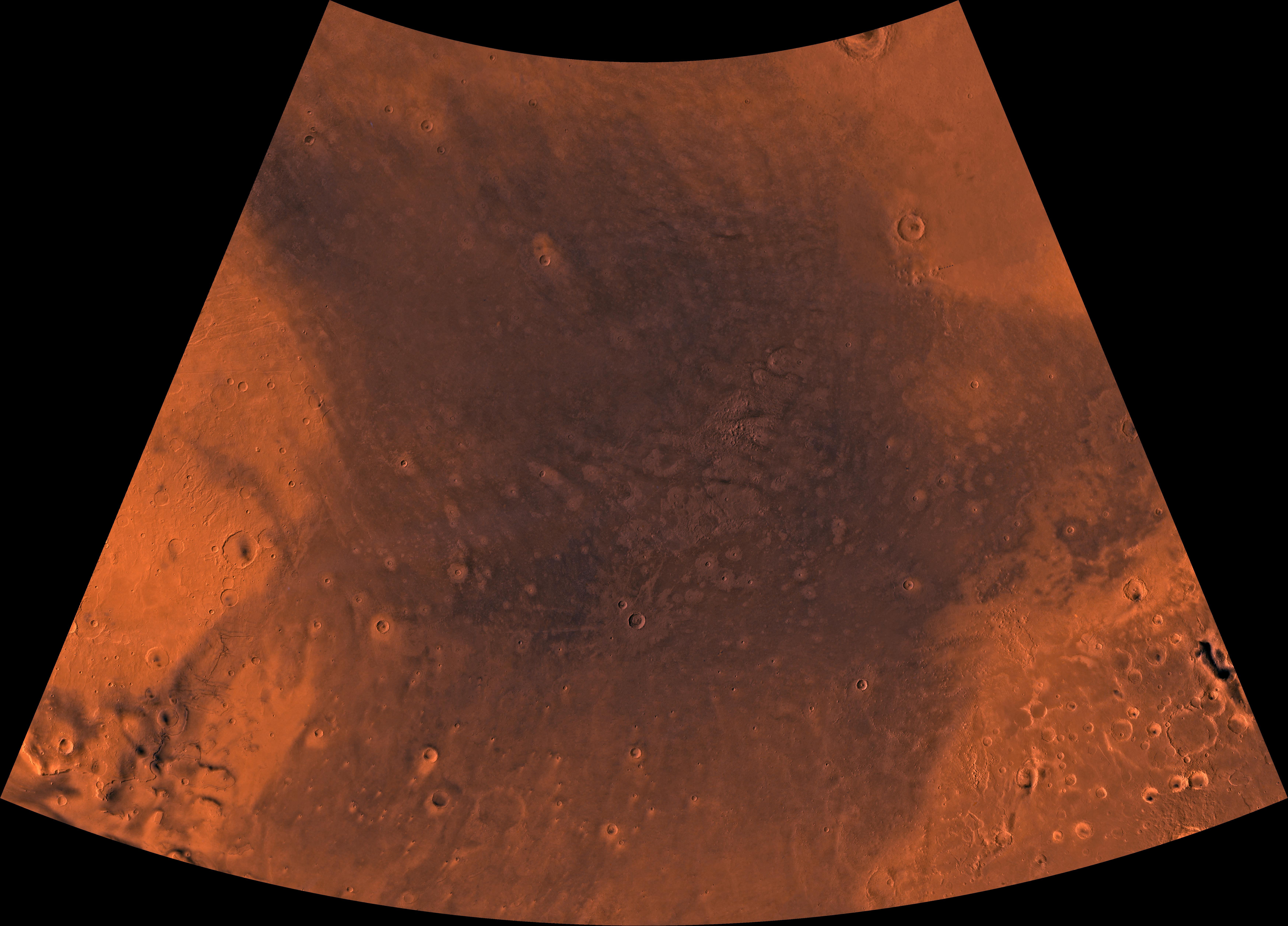|
Acidalia Colles
Acidalia Colles is a group of hills in the Mare Acidalium quadrangle of Mars, located at 50.9° north latitude and 23.1° west longitude. It is about long and was named after a classical albedo feature name. The term " Colles" is used for small hills or knobs. Gullies A gully is a landform created by running water, mass movement, or commonly a combination of both eroding sharply into soil or other relatively erodible material, typically on a hillside or in river floodplains or terraces. Gullies resemble lar ... have been observed on Acidalia Colles. References {{Geography of Mars, topograohy Mare Acidalium quadrangle Hills on Mars ... [...More Info...] [...Related Items...] OR: [Wikipedia] [Google] [Baidu] |
Mare Acidalium Quadrangle
The Mare Acidalium quadrangle is one of a series of 30 quadrangle maps of Mars used by the United States Geological Survey (USGS) Astrogeology Research Program. The quadrangle is located in the northeastern portion of Mars’ western hemisphere and covers 300° to 360° east longitude (0° to 60° west longitude) and 30° to 65° north latitude. The quadrangle uses a Lambert conformal conic projection at a nominal scale of 1:5,000,000 (1:5M). The Mare Acidalium quadrangle is also referred to as MC-4 (Mars Chart-4). The southern and northern borders of the quadrangle are approximately 3,065 km and 1,500 km wide, respectively. The north to south distance is about 2,050 km (slightly less than the length of Greenland). The quadrangle covers an approximate area of 4.9 million square km, or a little over 3% of Mars’ surface area. Most of the region called Acidalia Planitia is found in Acidalium quadrangle. Parts of Tempe Terra, Arabia Terra, and Chryse Planitia are ... [...More Info...] [...Related Items...] OR: [Wikipedia] [Google] [Baidu] |
Collis (planetary Nomenclature)
Collis (plural: colles , from the Latin word for "hill") is a small hill or knob on a celestial body. The term is used in planetary nomenclature: it is a part of international proper names of such features. Like other generic terms, it is capitalized and stands after the proper name (for example, '' Bilbo Colles''; the only exception is ''Colles Nili'' on Mars). As of 2015, only groups of the hills have names, and the term is used only in plural. Like the other terms of planetary nomenclature, this word describes only external view of the features, but not their origin or geological structure. So, it is used for hills of any origin. Names of bigger (especially domical) uplands usually contain the term ''Tholus'' ("dome"), and the names of still bigger mountains – the term ''Mons'' ("mountain"). Peculiar round mountains, which are found on Venus, get names with the term ''Farrum''. The term ''Collis'' was introduced into planetary nomenclature in 1982, on XVIIIth General Asse ... [...More Info...] [...Related Items...] OR: [Wikipedia] [Google] [Baidu] |
Gullies On Mars
Martian gullies are small, incised networks of narrow channels and their associated downslope sediment deposits, found on the planet of Mars. They are named for their resemblance to terrestrial gullies. First discovered on images from Mars Global Surveyor, they occur on steep slopes, especially on the walls of craters. Usually, each gully has a dendritic ''alcove'' at its head, a fan-shaped ''apron'' at its base, and a single thread of incised ''channel'' linking the two, giving the whole gully an hourglass shape. They are estimated to be relatively young because they have few, if any craters. A subclass of gullies is also found cut into the faces of sand dunes, that are themselves considered to be quite young. Linear dune gullies are now considered recurrent seasonal features. Most gullies occur 30 degrees poleward in each hemisphere, with greater numbers in the southern hemisphere. Some studies have found that gullies occur on slopes that face all directions; others have found t ... [...More Info...] [...Related Items...] OR: [Wikipedia] [Google] [Baidu] |
Acidalia Colles Gullies
Venus (), , is a Roman goddess, whose functions encompass love, beauty, desire, sex, fertility Fertility is the capability to produce offspring through reproduction following the onset of sexual maturity. The fertility rate is the average number of children born by a female during her lifetime and is quantified demographically. Fertili ..., prosperity, and victory. In Roman mythology, she was the ancestor of the Roman people through her son, Aeneas, who survived the Trojan War, fall of Troy and fled to Italy. Julius Caesar claimed her as his ancestor. Venus was central to many Roman festivals, religious festivals, and was revered in Religion in ancient Rome, Roman religion under numerous cult titles. The Romans adapted the myths and iconography of her interpretatio graeca, Greek counterpart Aphrodite for Roman art and Latin literature. In the later classical tradition of Western culture, the West, Venus became one of the most widely referenced deities of classical mytholog ... [...More Info...] [...Related Items...] OR: [Wikipedia] [Google] [Baidu] |



